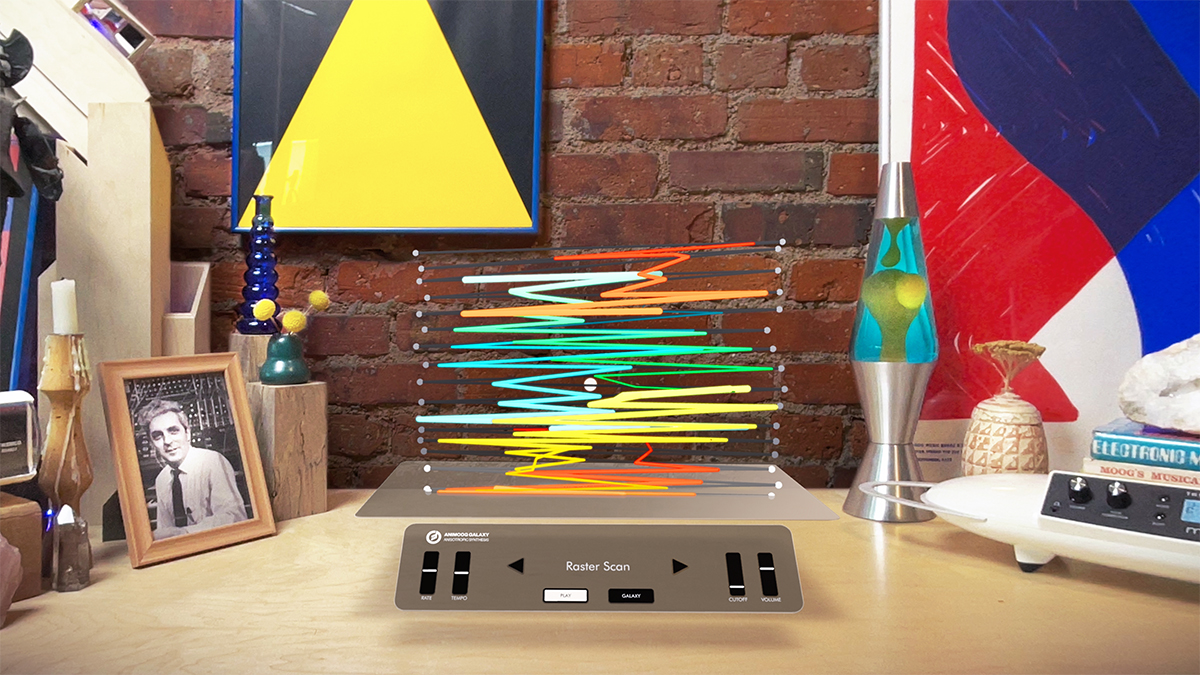Animoog Galaxy: Moog’s new synth is an Apple Vision Pro exclusive, and promises to be “an immersive experience unlike any other”
Welcome to the world of spatial computer music-making

Moog has unveiled a new synth, Animoog Galaxy, that runs exclusively on Apple’s Vision Pro ‘spatial computer’.
Given its heritage, it seems fitting that Moog is one of the first developers to release a synth for the Cupertino company’s new headset, though some elements of Animoog Galaxy are familiar. Specifically, it uses the Anisotropic Synth Engine (ASE) found in the previously released Animoog and Animoog Z (in fact, it offers backwards compatibility with presets and timbres from the latter instrument).
Visually, though, it’s something else: Animoog Galaxy enables you to combine generative visuals with your physical surroundings to create what we’re told is “an immersive experience unlike any other”. Vision Pro’s gesture controls are used to tweak and play the synth, though you can use a real MIDI keyboard if you wish. Flipping this around, you can also have MIDI Out so that you can use the virtual keyboard to play other instruments.


Said keyboard offers configurable scales, pitch correction and glide, while parameters can be tweaked by looking, pinching and dragging. Other features include a step sequencer, three DAHDSR envelopes, three LFOs, a modulation matrix and effects, and you're supplied with 120 presets.
Animoog Galaxy is available now for $30, which seems pretty reasonable. That said, if you’ve just dropped more than three grand on a Vision Pro, money is probably the least of your worries.
Animoog Galaxy joins the previously announced Vision Pro version of Algoriddim’s djay in the first tranche of music-making apps for the platform, and we’re sure that there will be plenty more to come.
Find out more on the Moog website.
Want all the hottest music and gear news, reviews, deals, features and more, direct to your inbox? Sign up here.



I’m the Deputy Editor of MusicRadar, having worked on the site since its launch in 2007. I previously spent eight years working on our sister magazine, Computer Music. I’ve been playing the piano, gigging in bands and failing to finish tracks at home for more than 30 years, 24 of which I’ve also spent writing about music and the ever-changing technology used to make it.